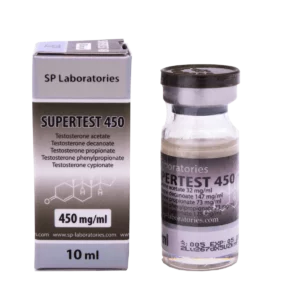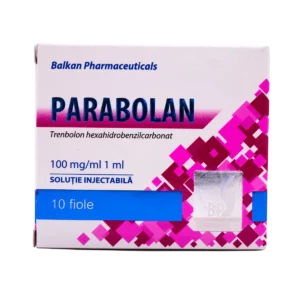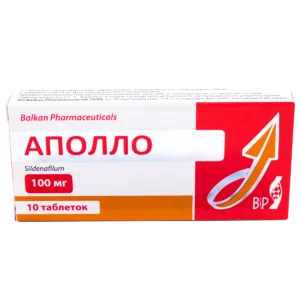Omega-3 is a group of unsaturated fatty acids, which includes 11 polyunsaturated fatty acids, 3 of which (α-linolenic acid (ALA), eicosapentaenoic acid (EPA) and docosahexaenoic acid (DHA), are irreplaceable (cannot be reproduced in the body in the necessary volume, and with their shortage, a variety of biochemical and physiological disorders occur).
In 2017, scientists from the Massachusetts hospital conducted an experiment in which it was noted that acids reduce the level of inflammation and oxidative stress by 50%, provoked by inhalation of polluted air.
Omega 3 and bodybuilding
Without a sufficient intake of Omega-3 fatty acids in the body, it is impossible to achieve the desired results in sports, be it weight loss, muscle gain or increased strength. With a lack of essential fatty acids, your performance will always be lower than it could have been. This article will talk about “good” fats, or rather about omega-3 and omega-6 polyunsaturated fatty acids, about the role they play in sports and how to get enough of them.
History
Although omega-3 fatty acids have been known as essential ingredients for normal growth since the 1930s, it has only been in the past few years that their full health benefits have been realized. Recently, new technologies have revealed ethyl esterified omega-3 fatty acids such as E-EPA and combinations of E-EPA and E-DHA. They have gained attention for being highly refined and more effective than traditional Omega-3s. They are available in Europe as a sports supplement.
The beneficial effects on the cardiovascular system became well known in the 1970s, after research by scientists. The subjects, during the study, consumed a large amount of seafood fats in order to identify their negative effects on health, but, in fact, not a single cardiovascular disease was detected. High levels of omega-3 fatty acids, widely consumed by Eskimos, can reduce the concentration of “bad” fats, which are the main causes of high blood pressure, atherosclerosis, heart attacks, strokes and many other diseases.
At September 8, 2004, The US Food and Drug Administration (FDA) officially recognized the efficacy of omega-3 fatty acids, and stated that “inconclusive but well-founded studies show that consumption of EPA and DHA fatty acids reduces the risk of coronary heart disease.” Currently, almost all official health care institutions agree with the beneficial properties of omega-3 fatty acids, and not only related to cardiovascular diseases, but also many others.
With the full recognition of the importance of Omega-3 fatty acids for health, a large number of supplements and sports nutrition based on Omega-3 have begun to emerge.
In 2017, researchers at the University of Taiwan developed a special sensor to diagnose the freshness of fish, as incidents of fraud in the sale and marketing of seafood increased in frequency. At this point, most fish freshness checks are done visually because the gold standard for testing requires complex chemistry and takes four hours.
Spectrum of effects of Omega-3
Omega-3s have a wide range of beneficial effects that are key to bodybuilding. We list only the main ones:
- Increased metabolic rate.
- They accelerate the growth of lean muscle mass and the reduction of body fat. They can be used both for weight loss and for mass gain.
- Increasing insulin sensitivity by slowing down the movement of food contents through the gastrointestinal tract. Thus, carbohydrates are absorbed more slowly without creating concentration peaks that cause desensitization of insulin islands.
- Improving the rheological properties of blood, due to a decrease in viscosity, as a result of which blood pressure decreases, the risk of cardiovascular diseases, the formation of blood clots, strokes and heart attacks decreases.
- Raises the general tone, increases stamina and neuro-muscular function. A study conducted in 2015 demonstrated an improvement in all of these qualities in men during training compared to a placebo control group that used olive oil.
- They are precursors of anti-inflammatory prostaglandins E3, and also inhibit the synthesis pathway of pro-inflammatory prostaglandins E2, which are formed from omega-6. Prostaglandins E3 reduce pain and inflammation that always accompany intense exercise, while prostaglandins E2 have the opposite effect and can suppress lipolysis. Thus, post-workout muscle breakdown is reduced, recovery time is shortened and fat utilization is increased.
- Omega-3 fatty acids prevent the destruction of cartilage in the joints. Several studies have noted that omega-3s relieve pain in joint diseases, improve their mobility and suppress inflammatory processes.
- Improve brain function, cheer up. The brain substance is 60% fat, and especially needs omega-3 fatty acids to function properly. A long-term study of the effect of omega-3 fatty acids on the brain has proven the possibility of using them even as a prevention of schizophrenia in adolescents
- Make skin softer and cleaner.
- A healthy source of energy that does not pose a risk of increasing fat mass.
- Enhance hormone production, including the most important testosterone in bodybuilding.
- Suppress the release of the catabolic hormone cortisol.
Polyunsaturated fatty acids of the Omega-3 series are also necessary in the following situations: functional disorders of the central nervous system, accompanied by a decrease in the level of mental energy and intellectual functions, states of chronic fatigue, rehabilitation after acute disorders of cerebral circulation; rehabilitation after a heart attack, angiopathy; osteomyelitis, bone fractures, trophic ulcers; autoimmune diseases; glomerulonephritis; pregnancy; skin diseases, cosmetic programs, cancer prevention, etc.
Cholesterol and atherosclerosis
On cholesterol (HDL, LDL) omega-3s have little effect, but they lower triglycerides. The exact mechanism has not been established, but there is evidence that this is associated with suppression of lipogenesis and increased beta-oxidation of fatty acids in the liver.
Despite the fact that omega-3s do not significantly affect cholesterol levels, they can inhibit the development of atherosclerosis by suppressing the inflammatory process, which leads to the formation of cholesterol plaques in the walls of blood vessels, as well as their rupture.
This is due to the effect on the expression of lipoprotein lipase, the effect on leukocytes and the suppression of the formation of pro-inflammatory cytokines. As a result, this causes a protective effect on the cardiovascular system and allows the use of essential omega-3 fatty acids to prevent myocardial infarction and strokes
Omega-6 to Omega-3 Ratio
Clinical studies have recently shown that the ratio of omega-6 to omega-3 (especially linoleic and alpha-linolenic) fatty acids also plays an important role. However, these data require confirmation, since subsequent tests did not establish such a correlation.
Omega-3 and Omega-6 compete for the same enzymes, so the ratio of these fatty acids will influence the ratio of eicosanoids (their metabolic followers are hormones, neurotransmitters and cytokines) such as prostaglandins, leukotrienes, thromboxane’s, which means that will have a significant effect on the entire body.
Omega-6 metabolites can significantly increase inflammatory responses (especially Arachidonic acid), in contrast to Omega-3. It follows that to maintain a balance of biologically active substances, Omega-3 and Omega-6 must be consumed in certain proportions. Recommended ratios range from 1:1 to 4:1/Omega-6 v/s Omega-3. As calculated, it is precisely these proportions that are evolutionarily the most adequate.
Nowadays, farmed meat contains high levels of omega-6 and small amounts of omega-3. Cultivated vegetables and fruits also contain lower amounts of omega-3s than wild plants. In the past 100-150 years, the amount of omega-6 in the diet has also increased significantly due to the large consumption of vegetable oils such as corn, sunflower, safflower, cottonseed and soybean oils. The reason for this was the recommendation to replace saturated fats with vegetable oils to lower blood cholesterol levels. Consumption of fish and seafood rich in omega-3 fats has been significantly reduced. In the modern Western diet, the ratio of omega-6 to omega-3 is in the 10-30:1 range, instead of the required 1-4:1.
This fact explains why Omega-3 fats receive special attention.
Omega-3 and Omega-6 fats in food
A full source of omega-3 fats is seafood (excluding pharmaceuticals). In the above oils, omega-3 fats are found in the form of alpha-linolenic acid, and in fish and seafood in the form of eicosapentaenoic and docosahexaenoic fatty acids, which are just the most useful and active.
Unlike omega-3 fats, polyunsaturated fatty acids of the omega-6 class are found in almost all vegetable oils. Also, small amounts of omega-6 fats are found in many other products, for example, in fresh vegetables, so we do not experience a lack of omega-6 fatty acids. Sunflower and corn oil do not contain omega-3 fats at all, but there are too many omega-6s in them.
Nuts and seeds are good sources of polyunsaturated fatty acids, but only omega-6 class fats. If you look at comparative tables of omega-fats in nuts, you will see that they contain a small amount of omega-3s.
Fish as a source of omega-3
In a 2017 study, it was shown that eating oily fish helps lower triglycerides and increase HDL or “good” cholesterol, thereby improving the functioning of the cardiovascular system. However, it should be noted that almost all red fish are now farmed on fish farms. For quick weight gain, the water is much warmer there, and the food – with the obligatory addition of grain products and a very low content of algae. Therefore, Omega 3 accumulates less.
The fish remains oily, but it is a different fat composition, similar in structure to the animal. If the red fish has a small head, and the body is large and the insides are shrouded in sufficiently dense fat – this fish is grown on a farm. In wild red fish, the head is very large and the fat is distributed throughout the muscles. In artificial conditions it is impossible to grow herring, capelin, sprat and mackerel. They must be preferred.
Omega-3s are destroyed when heated, and fish are usually stewed or baked, so most of the unsaturated fatty acids are destroyed during cooking.
| Type of fish | Content of long-chain omega-3 polyunsaturated fatty acids (g) per 100 g of fish (food portion) | Amount of fish (g) required to support 1 g of long-chain omega-3 polyunsaturated fatty acids |
| Tuna (fresh) | 0,28-1,51 | 66-357 |
| Atlantic salmon | 1,28-2,15 | 42,5-70,9 |
| Mackerel | 0,4-1,85 | 54-250 |
| Atlantic herring | 2,01 | 50 |
| Rainbow trout | 1,15 | 87 |
| Sardines | 1,15-2,0 | 50-87 |
| Halibut | 0,47-1,18 | 85-213 |
| Tuna (canned) | 0,31 | 323 |
| Cod | 0,2-0,3 | 357 |
| Haddock | 0,24 | 417 |
| Catfish | 0,18 | 556 |
| Carp | 1,0-1,1 | 91-100 |
| Perch | 0,2-0,6 | 167-500 |
| Flounder or sole | 0,49 | 204 |
| Salmon | 1,0-1,4 | 71-100 |
| Oysters | 0,4-0,6 | 227 |
| Shrimp | 0,2-0,5 | 313 |
| Scallops | 0,2 | 500 |
| Crabs | 0,2-0,4 | 250-500 |
Plant Sources Omega-3
Many authors write about the incredible benefits of flaxseed oil, which is most rich in omega-3 fatty acids. In addition, Omega-3 and Omega-6 fats in linseed oil are contained in an ideal ratio. Unfortunately, these authors forget about one feature of the polyunsaturated fatty acids Omega-3 and Omega-6, they have one significant drawback – they are extremely prone to oxidation. Especially fast oxidation occurs when fats are heated and when interacting with air. As a result, a huge number of free radicals are formed, which have many negative reactions to the whole organism.
Flaxseed oil does contain a lot of omega-3 fats, but unfortunately it oxidizes too quickly. The number of peroxides, that is, lipid oxidation products, is huge in it. Such oil will bring the body along with free radicals much more harm than good. This oil will oxidize too quickly, even if the bottle is refrigerated. This process takes place in an avalanche process when heated, so in no case should you fry anything in linseed oil.
In Russia, flaxseed oil can be safely bought at a pharmacy, and, for example, in France, the sale of flaxseed oil in bottles is prohibited due to the too high level of peroxides. Therefore, decide for yourself whether you need it or not (for example, in Germany, Switzerland, England, the USA it is freely sold in supermarkets).
If you still decide to buy it and eat it, be sure to check the expiration date (6 months from the date of squeezing) and make sure that it is in a lightproof container (for example, a dark brown plastic bottle). The smaller the volume of the purchased bottle, the better and more convenient it can be used and stored. After opening, store in the refrigerator for no more than 30 days. Or buy oil in capsules.
Flaxseed oil contains many useful substances, in addition to unsaturated fatty acids: Vitamin A, Vitamin B1, Vitamin B2, Vitamin B3 (Vitamin PP), Vitamin B4, Vitamin B6, Vitamin B9, Vitamin E, Vitamin K, Vitamin F; Macro- and microelements (potassium, phosphorus, magnesium, iron, zinc), Linamarin, Phytosterols, Squalene (up to 8%), Thioproline, Lecithin, Beta-carotene.
Omega-3 fats are also found in flax seeds (in this state, polyunsaturated fats are more stable), oat germ, and wheat germ. You can find them in health food stores or in ordinary supermarkets in the diet food department. They should always be kept in the refrigerator and used only fresh, otherwise you run the risk of over-saturating your body with free radicals instead of omega-3 fats.
A valuable source of plant-based Omega-3 is camelina oil. It has a high content of carotenoids, vitamin E, as well as phospholipids. Due to this, unrefined camelina oil is superior in oxidation resistance to other vegetable oils with a high content of polyunsaturated fatty acids. The main value of camelina oil is a high content of polyunsaturated fatty acids: 35-39% linolenic (Omega-3) and 14-22% linoleic (Omega-6). Thus, unrefined camelina oil is devoid of flaxseed oil flaws, while maintaining its advantages.
Clinical studies show that daily consumption of 30 g of camelina oil significantly reduces the level of low-density cholesterol in blood plasma compared with the use of rapeseed and olive oil.
Soybean, pumpkin, hempseed oil, and omega-3 walnut oil also contain fats. Unfortunately, in all these oils the amount of omega-6 fats is 3, 4, 5 times higher than the content of omega-3 fats, which we are sorely lacking. As we remember from the previous lines, omega-3 and omega-6 fats compete with each other for the same enzyme systems, therefore, the more you eat these oils with a huge amount of omega-6, as well as sunflower and corn, the harder it is for omega -3 fats realize their beneficial effects in the body. By consuming these oils, you are even more loaded with omega-6 fats.
GMO (genetically modified organism)
The British Department of the Environment, Food and Agriculture (DEFRA) has approved a project to grow a genetically engineered crop to produce a synthetic form of fish oil. As laboratory experiments have shown, the insertion of seven algae genes into the genome of Camelina sativa from the cabbage family led to the formation of omega-3 unsaturated fatty acids – eicosapentaenoic (EPA) and docosahexaenoic (DHA) acids in its seeds, which are useful for cardio vascular and nervous systems; shown that they reduce the risk of developing atherosclerosis and Alzheimer’s disease. If clinical trials are successful and the effectiveness and safety of such a product is proved, then it will appear in stores by 2020.
Omega 3 Fatty Acids and Brain Health
The treatment of depression, anxiety, and stress with omega-3 fatty acids is currently attracting the close attention of medical professionals. About 60% of the brain is made up of fat. And its main part is omega-3 fatty acids. When there is a shortage in the diet, other types of fats take on their work in the brain. As a result, the health of brain cells is impaired. For example, the membrane of each brain cell becomes stiff, and it takes longer to transmit electrical impulses from one cell to another. This means that the process of transmitting messages between brain cells slows down.
As a result, you cannot think clearly, and your memory is clouded. In such cases, depression and anxiety can also develop. Studies have shown that increasing the proportion of omega-3 fatty acids in the diet helps to avoid these problems.
Based on these data, the American Heart Association recommends eating two to three fish dishes per week. The best ones in terms of the presence of omega-3 fatty acids are wild salmon, mackerel, notothenia, cod, halibut, rainbow trout, crustaceans, sardines, herring and tuna. In addition, omega-3s are found in green leafy vegetables, nuts, canola oil, tofu, and flaxseed. However, they differ from those found in fish oil. This, in addition to EPA and DHA, is the third type of omega-3 fatty acid – ALA. To be beneficial, ALA must be converted in the body to EPA or DHA. When you eat flaxseed or get ALA from some other source, only 5% of ALA is converted to EPA and DHA. Moreover, for this to happen, you must be completely healthy and get enough nutrients.
Most people cannot get these 5% in full. Although flaxseed and other sources of omega-3 fatty acids (with the exception of fish) have certain advantages, they are unable to replace EPA and DHA. I recommend my clients eat five fish dishes per week. And when they are on the road and they have no opportunity to eat fish, I advise them to consume capsules with fish oil.
Oxidation of Omega-3 Fatty Acids by Thermal Exposure
Many authors note that the greatest danger to omega fatty acids is the high temperature during cooking. One can disagree with this, since omega-3 fatty acids are found in oil that has been subjected to repeated heating. Dr. Frank Sacks, professor of Cardiovascular Disease Prevention, Department of Nutrition, and Harvard School of Public Health has studied this issue separately, and also believes that heat is not a major factor in oxidation. Long-term storage in the open air when exposed to sunlight, when everything predisposes to oxidation of omega-3 fatty acids, is a significant danger. Keep food covered in a cool and dark place.
Fish oil as a source of omega-3 fatty acids
When buying fish oil, you may not actually get enough omega-3 fatty acids, says Rufus Turner, a scientist who studies lipids at Crop & Food Research. He and his colleague Dr. Carlene McLean investigated commercially available fish oils. They found that the samples contained different levels of primary and secondary oxidized fatty acids. Moreover, it was found that oxidized fatty acids have a carcinogenic effect and pro-inflammatory effect. They have an almost completely opposite set of actions compared to omega-3 fatty acids: they increase the risk of atherosclerosis, thrombosis, hypertension, etc. Dr. Turner says that, unfortunately, the content of omega-3 fatty acids in fish oil is unstable, and there is a much greater predisposition to oxidation compared to vegetable fats or other animal fats. Oxidation of fish oils begins at an accelerated rate immediately after extraction, and actively continues throughout the storage period.
Fish oil for muscle growth
Fish oil can also help build muscle. According to a study published in the Journal of the International Society for Sports Nutrition in 2010, muscle gains were seen after six weeks of taking fish oil preparations (3-4 grams per day). The results obtained showed that fish oil has a positive effect on protein synthesis in muscle cells, and an increase in the cells themselves was also noticed.
How much fish oil to take per day
There are many different opinions about how much fish oil to take per day. The American Heart Association recommends a low dose of 0.5 to 2 g per day, while others recommend 1 g for every percentage of body fat. However, a moderate and optimal intake is 1 – 2 g of fish oil along with food 2 – 3 times a day.
Many sources indicate information that you should not take fish oil for a long time. Admission must take place in courses. Approximately 3 courses for 1 month per year allowed.
According to data published in the journal “Journal of the National Cancer Institute”, it became known that elevated levels of omega-3s can be a risk factor that affects the development of prostate cancer.
However, a simple calculation shows that if you eat 2-3 portions of fish per week for 100-140 g, as many sources advise, referring, inter alia, to WHO recommendations, this gives about 11 g of fish oil per week or 1.5 g per day . Therefore, if there is not enough oily sea fish in your diet, then taking 1-2 g of fish oil per day should not be any danger.
Daily Omega-3
- To improve health and normalize cholesterol levels, it is enough to take 1-1.5 g of Omega-3 per day;
- When doing bodybuilding, a dose of 2-3 g daily is required to increase muscle mass;
- When losing weight, take 3-4 g of Omega-3;
- The physiological need for adults is 0.8-1.6 g / day of omega-3 fatty acids (ALA / EPA / DHA);
- The American Heart Association recommends 300 mg of EPA / DHA per day for healthy adults and about 1 g for patients with coronary heart disease;
- No admission break required.
Sports nutrition and omega-3 fatty acids
So, it becomes clear that it is very difficult for a modern person to get enough omega-3 fatty acids from regular food. In addition, it becomes difficult to store foods that are rich in omega-3 fatty acids – often you risk exposing your body to an attack of active radicals, causing major damage, instead of the beneficial properties of essential fatty acids.
It is also practically impossible to combine nutrition to create the optimal ratio of omega-6 and omega-3 fatty acids. Not everyone will want to eat fish 4-5 times a week. And given the high fat content in the meat of fish rich in Omega-3s, it is possible to create obstacles in the formation of a beautiful and slim figure, as well as relief muscles. But there is a solution, at present the sports nutrition market presents a very wide variety of supplements with omega-3 fatty acids. Scientists have carefully taken care to protect Omega-3 from oxidation and added antioxidants, such as Vitamin E, Astaxanthin and others.
Good research before moving to the buy supplements department in Balkapharm Online Store ensures that you don’t tend to the wrong steroid. Gender, age and other environmental factors are effective in manifesting side effects.







